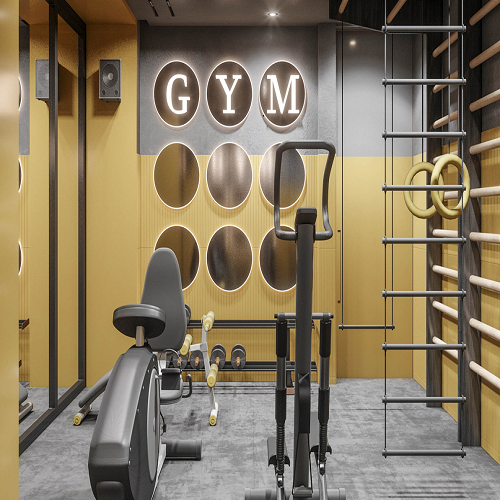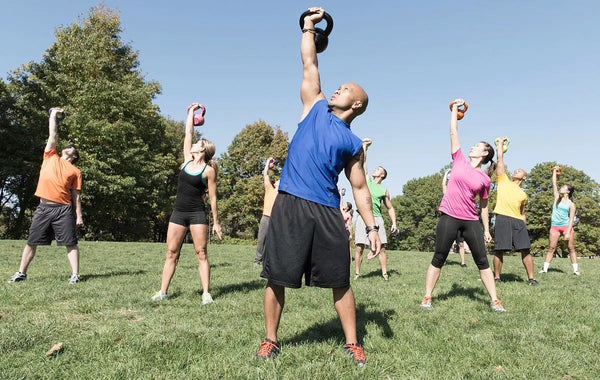
The kettlebell is made of cast iron with a flat bottom and a handle. The difference between Kettlebell and barbell, dumbbell and medicine ball is that the center of gravity is not in the center of the handle, which requires a higher level of physical fitness to complete the action of Kettlebell, and at the same time to recruit more stable muscles and prime mover in the specific action.
This is true, not limited, to the type of basic swing in Kettlebell training. No matter using two hands, one hand or two hands alternately to grasp, release and grasp, all kinds of movements and postures of Kettlebell training can improve the skills, coordination, neuromuscular control, dynamic flexibility and entertainment of the practitioners.
Various forms of change enable practitioners to transform dynamic strength into explosive strength in interesting, challenging and effective training.
History of Kettlebell
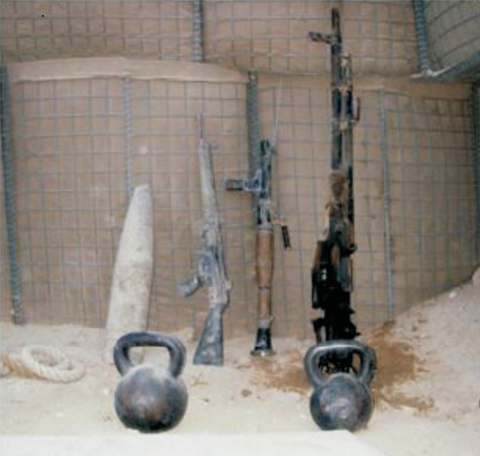
Kettlebell is a metal container used to boil or heat liquid on a flame. The word Kettlebell comes from the original Germanic word "katilaz", which originally means to describe a deep pot or plate. I believe many people know the word bell, which is the sound of a bell; The meaning of ring tone, two words spell together: Kettlebell Chinese translation for Kettlebell, very appropriate. Kettlebells originated in Russia гиря The pronunciation is "girya". I estimate that the Chinese name translation comes from English, not Russia.
And at present, although kettlebells originated in Russia, the most widely developed and most commercialized country is in the United States. Authentic kettlebells are made of cast iron or steel. The first time you see this kind of object and the first time you use it for training, you will be impressed.

In fact, there is no way to really understand the history of the kettle bell. Just like the stone lock used in ancient China, you can't tell who invented it and when it was first trained
However, it seems that the Russian Kettlebell as we know it today originated more than 300 years ago гиря The word first appeared in Russian dictionaries around 1704.
In 1948, the modern kettle bell lifting movement became a national movement in the Soviet Union. In the 1970s, Kettlebell sport became a part of the all State Sports Association of the United States of the Soviet Union. In 1974, many Soviet republics declared Kettlebell sport as "national sport". In 1985, they finally determined the rules, regulations and weight categories of the Soviet Union.

The black humor is that only six years ago, the Soviet Union disintegrated on December 25th 1991. Its participating countries have turned over the west, abandoned their former Soviet Union, and the heavy industry which the Soviet Union proud was dismembered by the Russian oligarchs. However, the proud "National Movement" hubell continued to continue in Russia, Eastern Europe and other countries today.
In 1986, the Soviet Union Book weightlifting Yearbook commented on huckling so that "in our sports history, it is difficult to find a more popular movement than Kettlebell"
Russian military requires new soldiers to train Kettlebell, which continues to date. The US military also introduces Kettlebell into its own military combat training system. It can be seen that the effectiveness of Kettlebell is widely recognized.

Although kettlebells have appeared in the United States for a long time, they have always been relatively small, but in the United States, the publication of "kettlebells - Russian entertainment" in 1998 triggered the popularity of kettlebells in the United States.
Today, Kettlebell has been widely used in the world because of its portability, function, diversity and efficiency. The "National Movement" which was once proud of the Soviet Union was studied and imitated by the people of all countries.
Benefits of Kettlebell training
1.Be able to work efficiently in limited space
Compared with the general training equipment, Kettlebell is much smaller in size, and the moving distance is not too long, so the space required is not particularly large, and the movement mode is mostly systemic. High efficiency, small size, for people with limited living space, it is a very practical training equipment.
2.Able to develop good squat posture
Early learning squat, generally from the goblet squat, hand holding Kettlebell squat start. The reason is that the goblet squat can reduce the burden on the spine, making it easier for beginners to experience the posture of neutral spine, knees and 2 thighs outward. Kettlebells are unique in this respect.

3.Promote more power
Compared with using the Olympic long bar for explosive training, kettlebells are more people-friendly. Especially in snatch, snatch, high flip clean and push press, Kettlebell can stimulate athletes' explosive power.
4.Strengthen the anti rotation ability of trunk
Kettlebell training has a lot of unilateral support, high head,the act of pushing over. Because these movements are unilateral operation, and often over the top of the head (easy to cause imbalance), can further exercise the "trunk stability" and "anti rotation" ability that athletes need.
5.Recruit many muscle groups at the same time
Because the center of gravity of the Kettlebell is not symmetrical on both sides of the dumbbell, it is easy for the center of gravity of the Kettlebell to deviate. Therefore, in order to stabilize and smooth the movement, the body will unconsciously recruit more muscle groups to help, and at the same time train them to make you stronger.
6.Help to improve the bad posture
Holding a Kettlebell in each hand is like carrying two buckets of water or milk. It means that there are many movements similar to life in Kettlebell training, such as carrying luggage and carrying objects. Through Kettlebell training, you can use hip and back strength more correctly and reduce the probability of injury.
7.Increase grip strength
Because of the shape, whether it is to take bags, buy vegetables or carry plastic bags, the handle of Kettlebell can always be used in many places of life; Hard pull also attaches great importance to grip strength. The weight lifting of the Kettlebell can increase the strength of the small arm and the overall grip strength.
8. training shoulder stability
As mentioned above, there are a lot of "high head" and "vertical push" movements in Kettlebell training, which need shoulder joint cooperation. Therefore, good mobility and stability are indispensable. Kettlebell training can improve the strength of shoulder joint and surrounding muscles.
9.Training can be performed on target muscle groups
The Kettlebell itself has the function of weight bearing. Just like the dumbbell, it can also be used to strengthen the muscles you want to strengthen. When you are familiar with its operation and know how to arrange the right amount of training for yourself, you can take one from shoulder, back, abdomen, leg to hip.
Kettlebell training can increase vitality
The throwing, grasping, accelerating and decelerating movements of Kettlebell training require high metabolism rate, which can develop the body energy unprecedentedly. Through the training of various elements of fitness, the intensity of training increases, which is equivalent to more energy consumption. The basic swing training can meet cardiovascular training.
Design strategy of Kettlebell training plan
For any form of training, mastering appropriate training techniques and forms can avoid injury. The technical requirements of Kettlebell training need to pay attention to careful practice. Please find a qualified coach to guide the training. Most of the Kettlebell training movements in the correct way are multi joint and multi muscle group participation. From stabilizing muscle to prime mover, we need to cooperate harmoniously and synchronously. Equal to muscle endurance and mental perseverance.

If there is no internal focus and intentional technical practice, you may be injured. Mastering skills is a necessary requirement for mastering skills. Every repetition needs to start from the ground until the whole movement maintains a perfect posture. The first priority must be to emphasize the back chain of the body. With the slight flexion and tightening of the abdomen, the appropriate contraction skills of gluteus and latissimus dorsi should be practiced continuously and carefully. Therefore, the practitioners can only master the skills by carrying out high-quality exercises for many times, and this form of practice is not suitable for all the people.
In addition, compared with other training, this exercise must ensure the quality of movement before increasing the number and advanced weight, and check the five point movement chain of the body
1.Feet: feet shoulder width, toes forward;
2.Knee: the knee joint points to the second and third toes (avoid varus and valgus);
3.Hip: keep in neutral position with lumbar level;
4.Shoulder: the downward and slight contraction of the shoulder joint activates the stabilizing muscles of the scapula;
5.Head: cervical spine in neutral position (Chin closed)
More safe and appropriate forms of guidance include: using high-quality chalk to protect hands, rubber floors with reasonable space, outdoor training venues, and wearing gloves.
Five Kettlebell exercises for beginners
In fact, Kettlebell is the same as other training tools! Can be used for most of the gym training!
1.Double arm Kettlebell swing
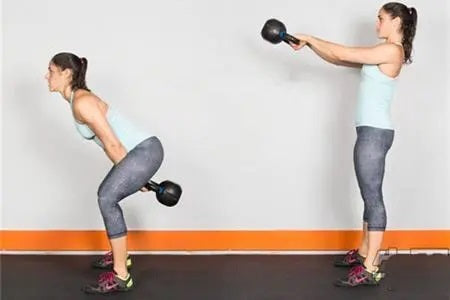
 Action tips:
Action tips:
- Hold the Kettlebell in both hands so that the Kettlebell is between the legs, the upper body leans forward from the hip, and the back remains straight.
- Swing the Kettlebell backward, and then use the explosive force to swing the Kettlebell forward until it is the same height as the chest. Keep your arms straight and stretch your hips, knees and ankles explosively.
2.Kettlebells press up
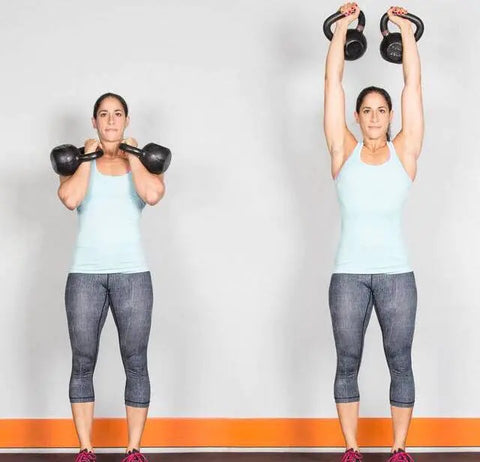
 Action tips:
Action tips:
- hold both sides of the handle with both hands, and close elbows as far as possible, and place the Kettlebell in front of your chest.
- raise your chest, and control the two shoulders to send the Kettlebell up and over, and slowly retract it back to the chest.
- training can keep the rhythm of fast shoulder push and slow falling.
3.Kettlebells deadlift
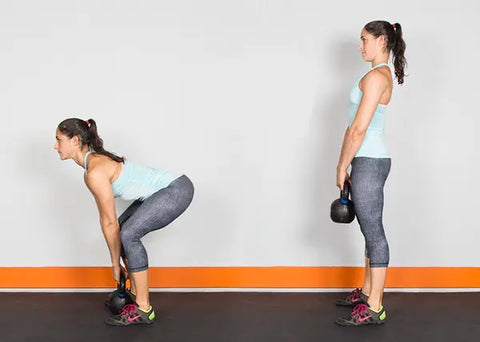
 Action tips:
Action tips:
- Bend your knees slightly, hold the Kettlebell with both hands straight, push your hips back, and maintain the tension of your body as a hard pull preparation position.
- Push your hips forward and clamp your buttocks tightly. Imagine someone stabbing your buttocks and returning to your normal standing position.
3.Push back the hip and return to the hard pull position.
4.Kettlebells rows
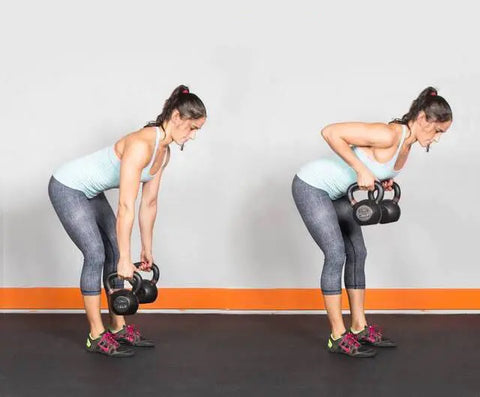
 Action tips:
Action tips:
- Bend your knees slightly, hold the Kettlebell with both hands straight, push your hips back, and maintain the tension of your body as a hard pull preparation position.
- Push your hips forward and clamp your buttocks tightly. Imagine someone stabbing your buttocks and returning to your normal standing position.
3.Push back the hip and return to the hard pull position.
5.Kettlebell squat
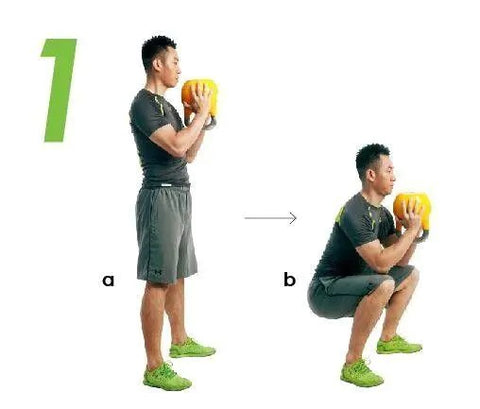
 Action tips:
Action tips:
- The two feet are slightly wider than the shoulder, the toes can be slightly outward, and the knee squat should be in the same direction as the toes.
- Hold both sides of the handle with both hands, keep your elbows inward as far as possible, raise your head and straighten your back, and then squat down.
3.Squat down to keep your back flat, and your elbows should fall on the inside of your thighs (knees).
IFAST FITNESS supply various of kettlebells.If you have interested in our body solid kettlebells, you can visit our online shore and get it!


